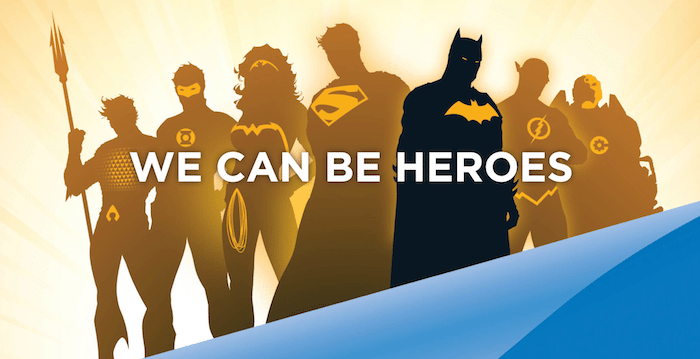
 Every year it’s the same thing. Following the glut of games that release during the winter months, we’re faced with a drought during the summer. We’re forced to search the bargain bin, play second rate games or replay old favorites. But, fortunately, the drought is quickly coming to an end. And one of the first great games of this season is a console version of the old PC favorite, IL-2.
Every year it’s the same thing. Following the glut of games that release during the winter months, we’re faced with a drought during the summer. We’re forced to search the bargain bin, play second rate games or replay old favorites. But, fortunately, the drought is quickly coming to an end. And one of the first great games of this season is a console version of the old PC favorite, IL-2.
From Dover to Stalingrad, IL-2 Sturmovik: Birds of Prey allows you to take to the skies in more than 40 era-authentic aircraft and take part in some of the biggest air battles in the European theater during World War 2. The game supports up to 16 person multiplayer and has more than 50 missions in its campaign.
505 Games sent me a copy to review and I had a great time playing. IL-2, in its former iterations, had a heavy emphasis on simulation and I was worried that the translation to simple controllers on the console would be difficult. But it wasn’t – the game was very easy to pick up & play. The tutorials eased me into the game and quickly I was in combat, shooting down German bombers and protecting queen & country.
Although the game is rated “T” for violence of the air combat variety and some mild language, my kids enjoyed watching me play. I gave them a chance at the controls, but they had a tough time controlling the planes … but they sure enjoyed crashing.
The environments were beautifully rendered and gameplay was a pleasure. One of the nicest surprises was trying to evade a fighter on my tail and watching as my wings were chewed up in realtime. Having played my share of console aerial combat games, I have to say that IL-2 rates very close to the top.
One of the draws of the IL-2 series is their passion for mixing gaming with history. I wanted to learn more, so I asked some questions of Alex Price, Senior Global Brand Manager of 505 Games about the game. Here’s what he had to say:
GeekDad: Can you speak a little about the differences between this new console version of IL-2 Sturmovik, compared to earlier PC versions of the game?
Alex Price: When developing the game we were conscious of the large IL-2 community and the strong product heritage. The overriding consideration was to successfully translate the PC experience onto the consoles and create a game that did the brand justice. We are confident we have nailed this and are really proud of the results. The main differences between the PC and console versions are the fact that we wanted to broaden the market in line with the demographics of the consoles. With this in mind we have implemented scalable gameplay – basically something for all levels from Arcade (for the newcomers to the category and those seeking a pick-up-and-play experience) to Simulator (for the fans of the PC game and more experienced players).
The console versions have also allowed us to create some awesome multiplayer gameplay. We have four modes: Dogfight, Team Battle, Strike and Capture the Airfield. We feel that this will be a massive hook for the game and something that will be really popular.
GD: Developing for a console certainly has some limitations that you don’t necessarily face when creating for the PC. What were some of those challenges were there features you were forced to eliminate or cut back?

 AP: OK, well I would say the main challenges were catering the game play itself for the console market. The PC game is a very serious hard-core product and we needed to look carefully at the console market and what they would want from an IL-2 game on each platform. For PS3 and 360, we have created an arcade product that will appeal to the general mass market on these consoles but then scaled this up in two increments, Realistic and Simulator modes. The final one giving IL-2 purists the game they would want to see and two levels of extra challenge for other players.
AP: OK, well I would say the main challenges were catering the game play itself for the console market. The PC game is a very serious hard-core product and we needed to look carefully at the console market and what they would want from an IL-2 game on each platform. For PS3 and 360, we have created an arcade product that will appeal to the general mass market on these consoles but then scaled this up in two increments, Realistic and Simulator modes. The final one giving IL-2 purists the game they would want to see and two levels of extra challenge for other players.
Creating the game for the console itself was not too difficult, there were some features that we were a little too ambitious with the first time round such as co-operative play. Also, if we had more time we would have liked to have developed more of story around the game including proper developer diaries and making the player feel much more that they were playing the part of the pilots in the game.
Another issue was the different technologies of the two consoles and how they handled their graphics and multiplayer capabilities, which meant a lot of tweaking and optimising, had to be carried out on both platforms to make sure we got the very best out of both consoles.
On the PSP and DS we needed to make sure the game was more pure action focused. With PSP the main challenge was trying to make the challenge in the game as dramatic and as close to the 360/PS3 versions as possible. The engine we are using is pushing the PSP to its limits so a very fine balancing act was needed to be carried out to maintain the action and frame rate while giving as many visual effects, etc. as possible.
On DS, again it was pushing the DS with best 3D engine we could and giving the player the most realistic flight combat game on DS while making sure the game was suited to the younger DS market and not overly complicated. We also wanted to make use of some of the DS’s unique features such as the stylus in the mission planning stage.
GD: In a historical game like this, how important of a role does research play in game development? Do you go for 100% accuracy in areas like cockpit accuracy, attacks and battle development or era-authentic landmarks and city layout … or are there areas that you allow yourselves to fudge a little?
AP: Realism has been an overriding consideration since the inception of the game and a driving factor in the development so we undertook a massive amount of research to achieve this. We felt it was important to create a game that was historically accurate and did not misrepresent WWII. To this end we used satellite technology to map the locations and analyzed thousands of photographs and maps from the period to faithfully recreate war-torn Europe. All the aircraft have been developed using photographs and blueprints of the original planes. We also consulted an aviation historian to ensure we accurately modeled the planes and also read dozens of history books to ensure that the historical backdrop to the game was accurate.
For those players that want to find out more about the aircraft featured in game (over 40!) there is an encyclopaedia in the game with detailed information.
GD: We’ve seen a lot of aerial combat games – and even more ground combat games – especially games that deal with WW2. What did you think you could bring to this game that would be fresh and different?
AP: We feel that we have set the benchmark in the flight combat category. Not only have we raised the bar graphically but no other game has managed to successfully implement scalable gameplay to this degree before. Birds of Prey also has some amazing multiplayer gameplay modes that we feel will really add to the longevity of the title (in addition to the 60+ hours of single player gameplay).

 GD: Granted, this game has a lovely pedigree, but it has one of the most unpronounceable titles since Xexyz. Did you give any thought to naming it Birds of Prey: IL-2 Sturmovik?
GD: Granted, this game has a lovely pedigree, but it has one of the most unpronounceable titles since Xexyz. Did you give any thought to naming it Birds of Prey: IL-2 Sturmovik?
AP: The name sets it apart from other titles and although it is a mouthful it has been named after one of the iconic soviet planes featured in the game (IL-2) and has become part of the identity of the title.
GD: Having played a bit of IL-2 for the Xbox, it is quickly apparent that this game is the closest to a true flight simulator that we’ve seen on a console in – perhaps – ever. How do you balance the realism and difficulty of a sim with the broader swath of casual gamers who want a more pick up & play experience?
AP: Early on in the development of the game we realized that we needed to extend the appeal of the game to a wider audience. It was imperative that we not only created a game that remained faithful to its sim heritage but also embraced more casual gamers and newcomers to the category. This was obviously a challenge but we felt it was really important to create a game with scalable gameplay. It was important to translate the sim experience onto the console as this is what we are renowned for and what we do best. This came with its own set of challenges but we have managed to do so and feel the PC fan base will enjoy playing it on consoles (we also integrated flight sticks). Conversely, we also wanted to create an accessible game for those looking for a pick-up-and-play experience. In the arcade mode you have unlimited fuel and ammo and it’s easier to shoot down enemy planes – we felt that these modifications would sit well with the more causal gamer and offer a really fun experience!
GD: It’s early, but any plans for a sequel? A look at the Pacific theater? Anything people can nibble on for the future?
AP: Based on retail and press feedback so far there is the appetite for a sequel and we are confident Birds of Prey will be well received by the game public so watch this space. We have loads of ideas for sequel titles and are confident we can exceed the high mark we set with this title next time!


